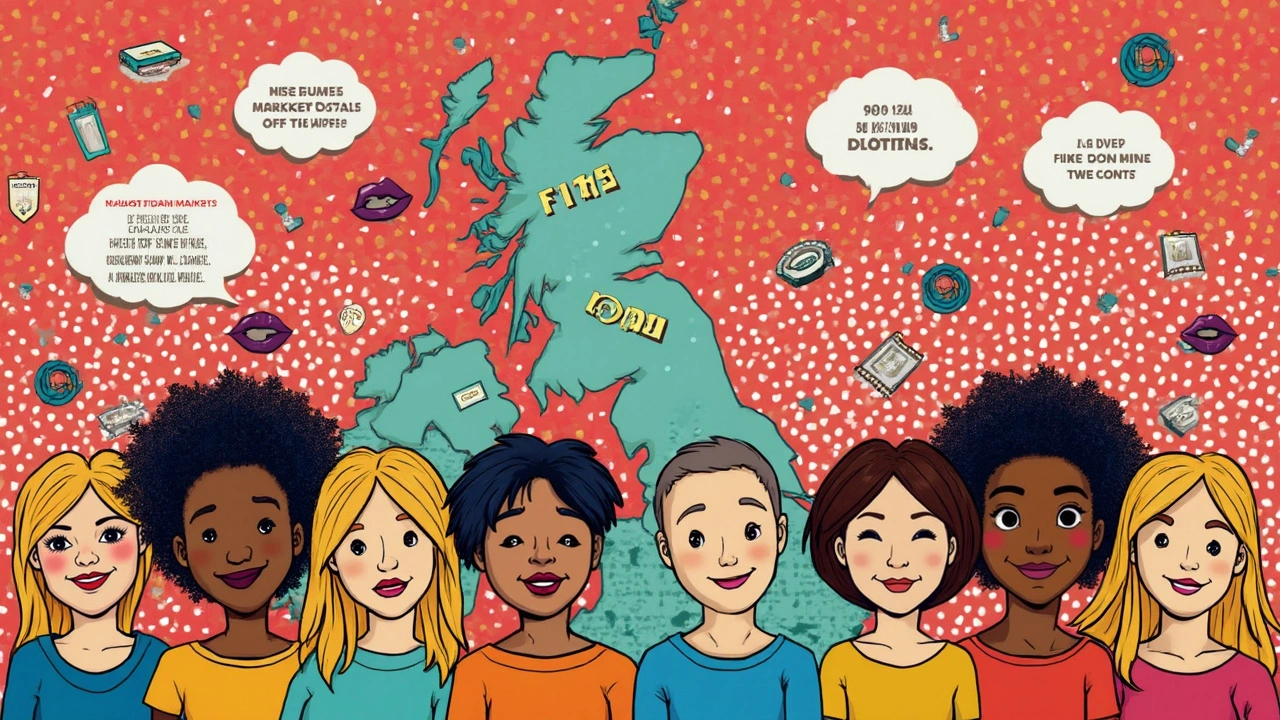Ever paused before going down on someone and wondered, “Am I really safe doing this without a condom?” You’re not alone. Unprotected oral sex is more common than you think, but it’s not exactly risk-free. Sure, it probably feels more natural, and lots of people say it’s just better—but there’s no magic shield here. Germs, viruses, and bacteria don’t care about your reasons for skipping the latex.
If you’re after the no-nonsense truth, here’s what you’re facing: yes, it’s possible to get or give STIs (sexually transmitted infections) through unprotected oral sex. We’re talking about big names like herpes, gonorrhea, chlamydia, syphilis, and even HIV, although the risk is lower compared to unprotected vaginal or anal sex. The numbers? For example, researchers at the CDC say gonorrhea rates in the throat are on the rise, especially among people who practice oral without a barrier. So, it’s not just talk.
This isn’t a scare tactic. It’s just about going in with your eyes open. Want the upsides, downsides, and real stories? Curious about ways to cut risk without killing the mood? Let’s break it down together, so you can decide what’s actually worth it for you. No sugarcoating. Just facts and real talk.
- Key Takeaways
- Direct Risk Assessment
- What Happens During Oral Without Condom
- Why People Go Bare: The Good, the Bad, the Reality
- Risks, Myths, and Must-Know Safety Moves
- Practical Q&A: Your Oral Without Condom Concerns
Key Takeaways
Here’s what you really need to know about oral without condom. This isn’t about scaring you off—just giving you the facts so you can make your own choice.
- You can catch or pass on STIs (like herpes, gonorrhea, and chlamydia) from oral sex without protection. The risk is lower than with unprotected vaginal or anal sex, but it’s not zero.
- Some STIs have no symptoms, so even if you and your partner look and feel fine, there could still be something going on.
- Most mouth-to-genital infections involve bacteria or viruses like gonorrhea (which can infect the throat), HPV, or herpes. Gonorrhea in the throat is on the rise according to recent CDC studies.
- Skipping the condom does make oral sex feel more natural and sensitive. That’s a big reason people do it—but you have to weigh that against the actual risks.
- If you’re under 25, in a new relationship, or have multiple partners, your chance of picking up an STI is higher.
- There are ways to stay safer, like getting regular STI tests, avoiding sex with open cuts or sores, and rinsing your mouth after—not before—oral sex.
| STI | Can You Get It with Oral Without Condom? | Notes |
|---|---|---|
| Herpes | Yes | Common via mouth-to-genital contact |
| Gonorrhea | Yes | Throat can be infected; rates are rising |
| Chlamydia | Rare but possible | Less common in the throat |
| Syphilis | Yes | Risk increases with mouth sores |
| HIV | Very low | Higher if partner has cuts or bleeding |
If you want the feel but not the risk, try using flavored condoms or dental dams. They’re less “in the way” than you think. Remember, when it comes to oral sex safety, it’s your body and your call. Just have the facts first.
Direct Risk Assessment
So, how risky is oral without condom for real? The short answer: It’s not totally safe, but it’s not the riskiest thing you can do either. The big trouble-makers here are STIs (sexually transmitted infections) like chlamydia, gonorrhea, herpes, syphilis, and even HIV—though the HIV risk is pretty low compared to other types of sex. That said, low doesn't mean zero.
Let’s break it down by infection, so you know what you’re actually inviting in:
- Gonorrhea & Chlamydia: Super common. You can get them in your throat or pass them to your partner. CDC data shows mouth-to-genital contact is a real transmission route. Gonorrhea in the throat is especially sneaky—lots of people never know they have it.
- Herpes (HSV-1 & HSV-2): Both types can be passed through oral sex, even if you or your partner don’t have visible sores. Cold sores? Yep, that's herpes.
- Syphilis: Growing fast among adults. Tiny cuts or sores in your mouth make it way easier to catch (or spread) this one.
- HIV: The risk is way lower compared to anal or vaginal sex, but it’s not impossible—especially if there are bleeding gums, mouth sores, or a high viral load.
- HPV: Can be passed on through oral without condom, and that’s linked to some throat cancers down the line.
Worried about real numbers? Check this out:
| Infection | Chances from Oral Without Condom |
|---|---|
| Gonorrhea | Pretty common (throat and genitals) |
| Chlamydia | Less common, but possible |
| Herpes | Easy to catch, especially with sores |
| Syphilis | Catchable if sores present |
| HIV | Very low, but higher with mouth sores or bleeding |
The big takeaway? If you pick oral without condom, you could catch or pass along these infections—even if nobody looks sick and you’re both “clean.” Many STIs show zero symptoms for weeks, sometimes months. So, just trusting appearances is rolling the dice.
Want to drop the risk a bit? Don’t have sex if you or your partner has a sore, cut, or any weird symptoms around the mouth or genitals. Regular STI tests help too, but remember—a negative test isn’t a superpower if you’re seeing new partners.
What Happens During Oral Without Condom
Straight up—when you have oral without condom, you’re sharing more than just pleasure. It’s a direct mouth-to-genital (or mouth-to-anus) action, which can move all sorts of germs, bacteria, and viruses between partners. Saliva, semen, vaginal fluids, and even tiny cuts or sores you didn’t know you had all come into play.
Here’s what really goes down:
- If one person has a sexually transmitted infection—like gonorrhea, chlamydia, syphilis, herpes, or even HPV—it can be passed to the other person’s mouth, throat, or genitals.
- You might not see symptoms right away, or at all. Oral STIs often hide without causing clear signs.
- Open sores from cold sores (oral herpes), gum disease, or even shaving nicks make it even easier for things like HIV or syphilis to cross over.
People sometimes think that, because it’s just oral, the risk is low. Yes, it’s lower than with unprotected sex in other ways, but it still isn’t zero.
| STI | Can Oral Without Condom Transmit? | Chance of No Symptoms? |
|---|---|---|
| Herpes (HSV-1 & HSV-2) | Yes | Common |
| Gonorrhea | Yes | Very Common |
| Chlamydia | Yes | Possible |
| Syphilis | Yes | Possible |
| HIV | Possible (but rare) | Possible |
Something worth knowing—antibiotic-resistant gonorrhea is showing up more in throats lately, especially among people who skip condoms during oral. That’s a real thing, mentioned in CDC updates just this year. This means even if you don’t feel sick, you could have something and pass it on.
For anyone brushing off protection because it “feels better” or “everyone does it,” just think about how invisible most oral STIs are. It’s not about being afraid—it’s about knowing what’s actually happening when you make that choice.

Why People Go Bare: The Good, the Bad, the Reality
So why do folks choose oral without condom even when they know there’s a risk? It’s not just about being careless. There are some real reasons people skip protection—but also some real problems that come with it.
Let’s start with the upsides. Most people say it just feels better—plain and simple. The sensitivity is higher, there’s less of that rubbery taste or smell, and it feels more natural. Some find condoms during oral ruin the vibe or make things awkward. Studies show about 70% of young adults who have oral sex don’t use condoms, simply because they think pleasure matters more during those moments.
- Better sensation: No barrier means more direct contact, which can lead to stronger sensations for both partners.
- No latex taste or smell: Condoms can taste weird or have a smell that’s hard to ignore.
- Spontaneity: Skipping the condom sometimes just feels easier in the moment—no interruption to grab one.
Now, for the reality check. Unprotected oral is not risk-free. It’s not just about STIs in the genitals; you can pass things back and forth between mouth, throat, and genitals. Herpes, gonorrhea, chlamydia, and syphilis can all spread this way. Oral herpes (cold sores) is super common, and that virus can easily pass during oral without a condom—even if you don’t see a sore. Some people think you can’t get HIV from oral, but there is a small risk, especially if there are cuts or sores in the mouth.
Ever heard, “It’s just oral—what’s the worst that can happen?” Here’s a reality check in numbers:
| STI | Estimated Risk per Oral Act (without condom)* |
|---|---|
| Gonorrhea | ~3%-20% |
| Chlamydia | ~1%-10% |
| Syphilis | ~1%-5% |
| HIV | <1% (much lower, but not zero) |
*Based on reported cases; the risk depends on the presence of infection, cuts, sores, or dental issues.
The bad? Besides possible infection, there can be social or emotional fallout. If you get an STI, you’ll have to talk to partners, maybe deal with medical treatments, and there’s always the anxiety when something feels "off" down there later on.
Here’s the bottom line: oral without condom might feel better in the heat of the moment, but it does open the door to real health risks. The decision comes down to what matters most to you—pleasure, peace of mind, trust, or your partner’s history. Everyone weighs these differently, so there’s no one-size-fits-all answer here.
Risks, Myths, and Must-Know Safety Moves
Let’s get real about the actual risks of oral without condom. You might have heard it’s basically safe, but that’s just not true. You can pick up or pass along several STIs during unprotected oral—especially gonorrhea, herpes, chlamydia, syphilis, and even HPV. The chance of getting HIV from oral sex is lower than other types of sex, but it’s not zero, especially if one person has cuts in their mouth or a high viral load.
Here’s a quick look at how risky things get with the big ones:
| Infection | Oral Transmission Risk | Notes |
|---|---|---|
| Gonorrhea | Medium-High | Easy to catch from throat to genitals and vice versa |
| Chlamydia | Low-Moderate | Harder to catch, but still possible |
| Herpes (HSV-1 & 2) | High | Can spread with or without visible sores |
| HPV | Medium | Linked to oral cancers |
| Syphilis | Medium | Rising among people under 30 |
| HIV | Low | Risk is very low, but not zero |
One myth you’ll hear a lot: "You can’t get an STI from oral sex." Sorry, but the Centers for Disease Control and Prevention say otherwise. Another common one? “You’ll know if someone is infected.” Nope. People spread infections without symptoms all the time. Even dentists see throat STIs from unprotected oral because most people don't even know they have one.
So, what can you do to lower the odds while still having a good time? Here’s where the must-know safety moves come in:
- Use barriers when you can: Condoms for penises, dental dams for vulvas and anuses. It’s not everyone’s favorite, but it cuts the risk way down.
- Get tested regularly: If you’re sexually active, swap your status with your partner(s) before things heat up. Regular checkups can catch problems early.
- Don’t brush or floss right before: Tiny cuts in your gums make it easier for germs to get in.
- Avoid if you or your partner have sores or open cuts: This is an express lane for viruses and bacteria.
- Stay away if you have symptoms: Any weird discharge, itching, or pain? Hit pause and get checked out.
- Vaccinate: The HPV vaccine lowers cancer risk. The hepatitis B vaccine is standard for most adults now for a reason.
People often ask, “Is unprotected oral really that risky?” The answer? It’s not the Russian roulette some people make it out to be, but it’s also not a free pass. We all have different comfort zones, but knowing the real deal lets you choose what’s right for you with eyes wide open.
Practical Q&A: Your Oral Without Condom Concerns
There’s a lot of talk about oral without condom and what it really means for your health. Here are some of the most common questions people ask—and honest answers that cut through the confusion.
Can you really get STIs from unprotected oral sex?
Short answer: Yes. Sexually transmitted infections like herpes, gonorrhea, chlamydia, syphilis, HPV, and even HIV can pass through oral without a condom, though the odds are a bit different for each infection. Don’t buy into the myth that oral is "basically safe"—it does carry risk, and depending on your partner’s STI status, sometimes a lot of it.
Which infections are most likely to spread?
The throat and mouth can pick up or pass along:
- Gonorrhea (throat infections are on the rise in the US and UK)
- Herpes simplex virus (even with no visible sores)
- Syphilis (those early sores often go unnoticed)
- HPV (can cause throat warts or, rarely, throat cancer)
- Chlamydia (less common in the throat, but possible)
For HIV, the risk is lower versus unprotected anal or vaginal sex, but it isn’t zero—especially if there are cuts, sores, or bleeding gums involved.
Does brushing your teeth or using mouthwash after oral help lower the risk?
It’s actually the opposite; brushing or flossing right before can make you more vulnerable by causing micro-tears in your gums. Don’t do those things right before giving or getting oral without a barrier. If you want to freshen up, use mouthwash with care and avoid anything that irritates your gums.
Is it safer to only give or only receive?
Both sides can get or pass on STIs. If your partner has an infection, you can catch it by giving oral. If you have an infection in your mouth or throat, your partner can pick it up from receiving. It goes both ways.
What if my partner looks healthy and has no symptoms?
Most STIs show no symptoms for a while, and some never show. Someone can pass along infections without having any clue they have one. You can’t spot-check this stuff, so don’t assume someone’s status based on how they look or act.
| STI | Can It Spread via Oral? | Common Symptoms |
|---|---|---|
| Gonorrhea | Yes | Sore throat, none |
| Herpes (HSV-1, HSV-2) | Yes | Sores, tingling |
| Syphilis | Yes | Painless sore, rash |
| HPV | Yes | Warts, none |
| HIV | Rare, but possible | None specific |
Are there any ways to cut the risk if I don’t want to use condoms?
- Get tested with your partner, and talk openly about STI status.
- Avoid oral if you have sores, cuts, or gum disease—healing tissues give infections easy entry.
- Avoid oral if you or your partner have recently had other partners and haven’t been tested.
- Limit partners or stick with someone you trust and communicate with.
- For people with penises, pulling out before ejaculation can lower some risks, but doesn't guarantee protection.
How often should I get tested if I practice oral without a condom?
If you’re regularly skipping the condom, get screened 2-4 times a year for the most common STIs—especially if you’re not monogamous. Tests usually cover gonorrhea, chlamydia, HIV, and syphilis, but ask about throat swabs specifically—many clinics only do urine or blood unless you ask.
Bottom line: oral without condom might feel easier and more natural, but it’s not risk-free. Knowing what you’re facing—and how to lower your odds—goes a long way toward keeping your sex life healthy and drama-free.








